It is surprising for a non-deaf person or those who do not use sign language that there exists more than one sign language. Most people tend to believe that there is a universal sign language that is understood by all deaf persons in the world. This isn’t true. More than 300 types of sign languages exist around the world. These sign languages use fingerspelling as tool to convey meaning. Fingerspelling is the representation of the letters and numeral of a writing system using only the hands. In fingerspelling, distinct hand and finger arrangements and movements are used to represent alphabets and numbers. Through this article, we will take you on a trip around the globe to explore some of the major sign languages of the world.
But, before we introduce you to different sign language alphabets, let us understand a few basics about ‘Sign Languages’.
Sign Languages as Compared to Written or Oral Languages
A sign language is actually a language and not a direct translation of the written or oral languages. All the sign languages have developed independently as a mode of communication and not a ‘finger-interpretation’ of the spoken languages. Therefore, countries sharing the same spoken language do not necessarily share the same sign language. English, for example, is a language used widely but different countries have different fingerspelling for the same English Alphabet (we will see this further).
Words used in the spoken language are important but the entire meaning of dialogue is interpreted based on the body language, pitch and intonation of the voice of the speaker in addition to those words. Similarly, sign language is never completely based on the fingerspelling alone. Gesture, facial expression and body language play an important role in the interpretation of sign language.
Though it’s a common belief that sign language is a mode of communication for the deaf and people who are hard of hearing. But, sign languages can be useful for others such as people with autism, cerebral palsy, Down syndrome etc. Moreover, sign language can prove to be useful for non-disabled people too in some circumstances.
Major Sign Language Alphabets used Around the World
One of the major components of Sign Language is Fingerspelling – the use of hands to represent individual letters of a written language. Fingerspelling is used to spell such things that do not have an established sign in the given sign language. Some sign languages use a single hand to spell each letter while there are languages that require both hands to spell the letters.
Here we are sharing sign language alphabets used in different parts of the world.
American Sign Language (ASL)
One of the most popular sign languages around the world is American Sign Language. Although it contains the same alphabets as English, it is not a subset of the English language. Sentence formation or the sequence of words in a sentence is different in ASL as compared to English because of its unique grammar rules. ASL is considered to be a descendant of French Sign Language that is also influenced by Martha’s Vineyard Sign Language and some other local sign languages. ASL uses the one-hand fingerspelling method for the English Alphabet.
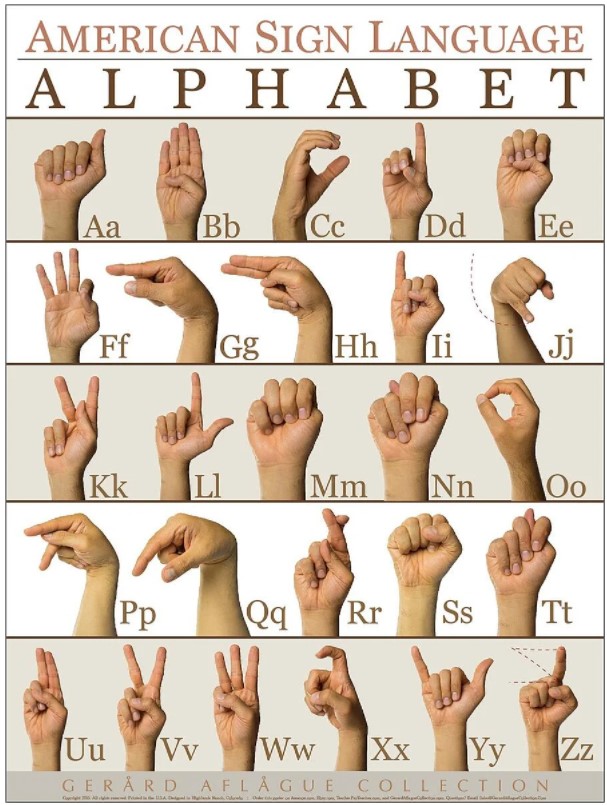
British, Australian and New Zealand Sign Language (BANZSL)
British Sign Language, Australian Sign Language and New Zealand Sign Language are so similar in their grammar, vocabulary and alphabets that they are considered to be a single language. Some Sign language experts say that they can at max be called a dialect of the same sign language. This is the reason they are grouped as BANZSL. Alphabets in BANZSL need to be finger-spelled using both hands.
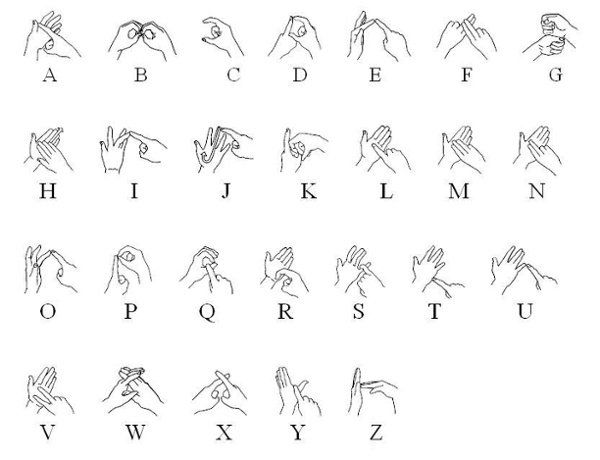
Chinese Sign Language (CSL or ZGS)
The first Chinese school for the deaf was opened by the American Missionaries and hence the Chinese Sign Language is somewhat influenced by the American Sign Language. But, again, ASL and CSL are two distinct sign languages, each affected by their own local cultures. There are various dialects of the Chinese Sign Language. The most popular among them is the Shanghai CSL. Chinese Sign Language uses one hand to visually represent the written Chinese characters.
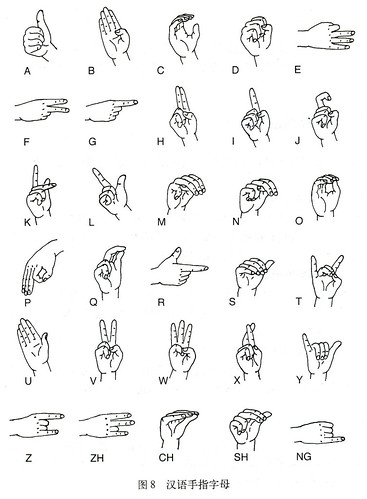
French Sign Language (LSF)
French Sign Language is one of the oldest European Sign Languages. It is a predecessor to several other sign languages including ASL, ISL and RSL. French Sign Language is the first or the most preferred language for many people, in France but again, FSL is not used everywhere where French is the main language. There are other variants and different sign languages used by French people. The French Sign Language uses one hand to represent the alphabet.
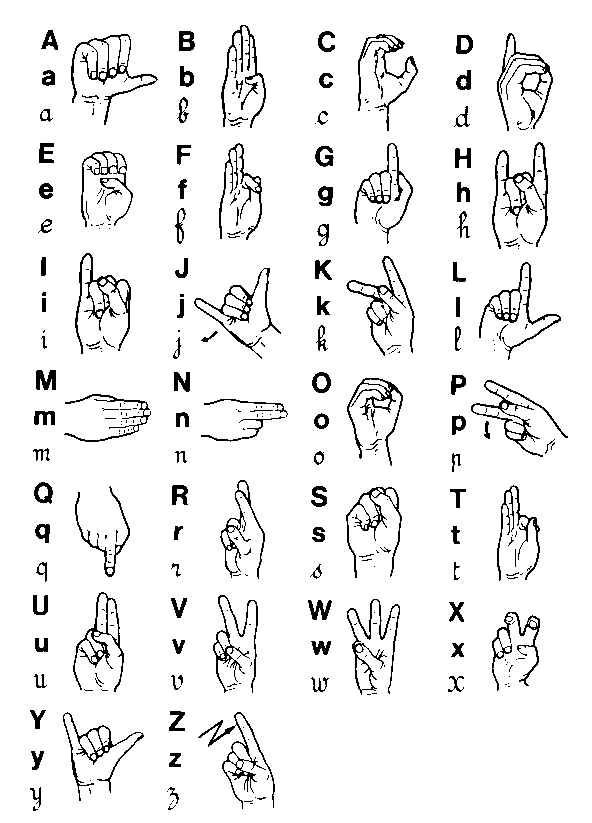
Japanese Sign Language (JSL)
Locally called the Nihon Shuwa, the Japanese Sign Language is based on the Japanese alphabets. The alphabets in Japanese are actually phonetic syllables and JSL is a representation of those phonetic syllables. JSL is quite different than other sign languages as it is very closely related to the spoken Japanese language. Even while fingerspelling a syllable people use to mouth those characters as they are pronounced in Japanese. This distinction makes it much different than other major sign languages.
Arab Sign Language Family (ARSLs)
This is a family of sign languages that are used across the Arab Mid-east. Comparatively, Arabic Sign Languages are of very recent origin. They have been codified recently and are still considered in their developmental phase.
Spanish Sign Language (LSE)
The Spanish Sign Language is recognized officially by the Spanish government. Though not all Spanish speaking countries use the Spanish Sign Language (LSE).
In addition to the above-mentioned Sign Languages, there are others like Swedish Sign Language (TSP), Indo-Pakistani Sign Language, and Brazilian Sign Language etc. Every sign language has its own rule for grammar and gestures. Hand position is also one of the most important aspects of sign language.
Hope this article was helpful in providing you some interesting and useful information about different sign languages used around the world.
Use the citation below to add this article to your bibliography
"Fingerspelling: Meaning, Method, Alphabet and Practices around the World." Wecapable.com. Web. April 25, 2024. <https://wecapable.com/fingerspelling-meaning-method-alphabet-practice-world/>
Wecapable.com, "Fingerspelling: Meaning, Method, Alphabet and Practices around the World." Accessed April 25, 2024. https://wecapable.com/fingerspelling-meaning-method-alphabet-practice-world/
"Fingerspelling: Meaning, Method, Alphabet and Practices around the World." (n.d.). Wecapable.com. Retrieved April 25, 2024 from https://wecapable.com/fingerspelling-meaning-method-alphabet-practice-world/

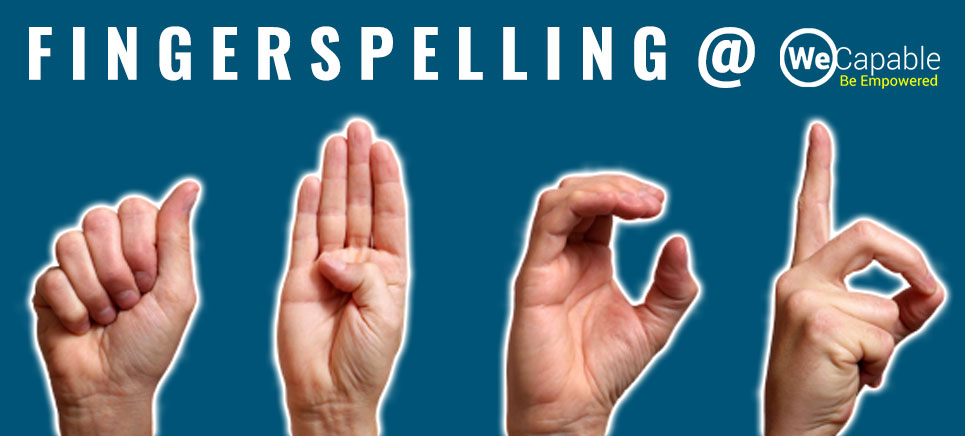
So I am in 6th grade and I am learning sign language and I got to say this thingy really is teaching me some cool stuff
This helped me learn more about sign language around the world! However, I would like it if there was a download button so I could make the images into posters for my classroom.
I am a university student in Kenya. Leaning sign language has helped me to communicate easily with people who are challenged.
I’m in 7th grade and I’m learning sign language because I go nonverbal at times and I have a deaf friend. My dad is learning as well. This helps a lot. Thank you.
This is so commendable that you’re sensitive to these needs at such a young age. My best wishes to you.